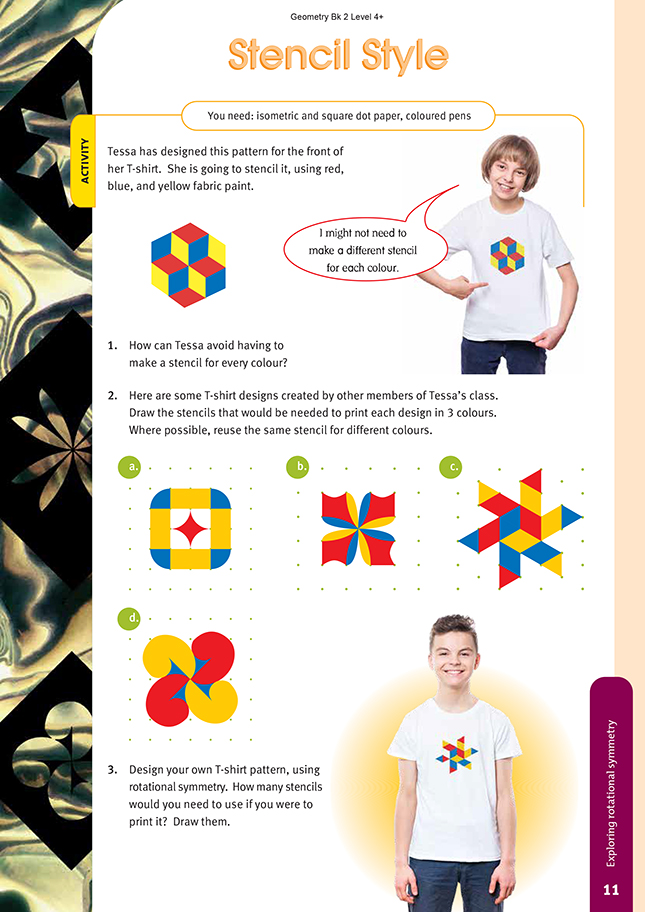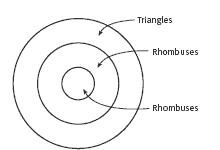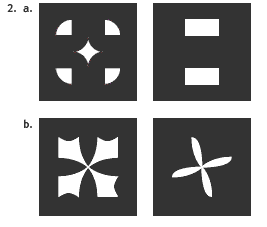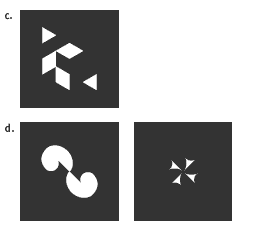This is a level 4 geometry strand activity from the Figure It Out series.
Click on the image to enlarge it. Click again to close. Download PDF (227 KB)
explore rotational symmetry
square paper
coloured pens
FIO, Level 4+, Geometry, Book Two, Stencil Style, page 11
Copymaster of isometric dot paper
Each of the designs in this activity could be done using a stencil for each of the individual repeated elements that make it up. (For example, a single rhombus stencil could be used 12 times to make the design on the T-shirt.) What is wanted, however, is a single stencil for each colour involved. In this way, the relationship between the individual elements is preserved as well as their shape. So, in question 1, the stencil consists of 4 rhombuses and it is used 3 times. The first 2 positions are shown in the diagram:
The most difficult part of question 2 is c. This is because the elements of the stencil are not arranged symmetrically in relation to each other. Students can see that there are 3 colours, so they know they will be looking for a stencil that can be used 3 times. The finished design has 15 elements, so 5 of them must be on the stencil
(3 rhombuses and 2 triangles). The students could imagine the design in terms of 3 concentric bands, with the 6 triangles on the outside, 6 rhombuses in the middle band, and 3 rhombuses in the inner band. They can then use deduction or trial and improvement to work out exactly which parts of the finished design are in each band
on the stencil.
As the design has rotational symmetry and the stencil is used 3 times, it should be clear that the angle of rotation each time is 360 ÷ 3 = 120 degrees.
Experience with questions 1 and 2 should give the students ideas they can use when working on question 3. When they have created their designs, they could show them to the rest of the class and explain their symmetry or invite others to explain how the symmetry works.
Answers to Activity
1. She can use the stencil below for the 1st colour, clean it, turn it 120¡, use it for the 2nd colour, and repeat the process for the 3rd colour. She can do this because the design has rotational symmetry.
3. Designs and stencils will vary.





